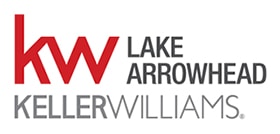Preparing Your Home
The effort put into repairing and cleaning your property is likely to be returned in a fast sale at an attractive price.
As buyers approach your property the first time, impressions are formed quickly.
- Paint house – this can do more for sales appeal than any other factor.
- Yard – Remove all toys, garbage, garden tools and other items from view. Mow lawn and keep edged.
- Close garage doors.
- Put colorful flowers in front of the house.
Often, while waiting to be let in, the first thing a buyer looks at closely is the front door.
- Put new paint on the front door.
- Buy a new door mat.
- Buyers take a close look at the basement of a home. They will look for bad wiring, leaky pipes and signs of decay.
- Clean out basement and dispose of everything you are not going to move.
- Ensure that there is plenty of lighting.
- Sweep or vacuum floor.
- Stack items neatly against walls.
The kitchen is often the most important room in the house. Make it bright and attractive.
- Put a vase of fresh flowers on the table.
- Replace curtains or clean existing ones.
- Remove appliances from counters.
- Create a pleasant fragrance in the kitchen (i.e. vanilla, cinnamon).
It is important that bathrooms are clean, bright and smell fresh.
- Install a new shower curtain and replace worn throw rugs.
- Polish all fixtures.
- Open windows.
- Hang bright, fresh towels.
- Remove stains from toilets and bathtubs.
- Use air freshener.
- Display colorful soaps.
The living room.
- Clean out the fireplace and place logs in it.
- Polish all woodwork.
- Put big furniture in storage so rooms are not cluttered or crowded.
Repair & Cleaning Checklist
| Front Door Newly painted Exterior of House House recently painted Windows Window trims painted Driveway Resurfaced Patios Wood stained or painted Lawn Lawn in good condition Dead branches pruned Entry Entry lights operating Living Room Recently painted Sink free of stains | Family Room Cracks in ceiling/walls repaired Bedrooms Cracks in ceiling/walls repaired Cracks in ceiling/walls repaired Dining Room Cracks in ceiling/walls repaired Bathrooms Sink stains removed |
Possible Work Orders
The following is a list of some possible work orders. The work orders must be completed prior to closing and the seller is responsible for having them done. Check with your local authorities for specific requirements.
The following conditions may require a work order:
- Broken windows.
- Debris in crawl space.
- Dry rot or deteriorated wood.
- Earth-wood contact.
- Overgrown shrubbery.
- Electrical not in working condition.
- Gutters and downspouts blocked or missing.
- A hot water tank without a 3/4″ discharge line.
- Inadequate foundation ventilation.
- Inadequate attic ventilation.
- Less than four feet of waterproof material around tub enclosures (tile, formica, etc.).
- Less than 18″ clearance between soil and floor joists under entire house.
- Peeling or missing paint.
- Plumbing not in working condition.
- Water damage inside home.
You might have to:
- Paint the exterior and interior if in bad condition.
- Hook up to public water or sewer if available.
- Get county certification if home is on septic or well.
- Remove unused oil tanks or fill with cement-slurry or polyurethane foam.
Other items to remember:
- Inspectors will need access to the attic.
- Leased equipment cannot be included in the sale (i.e. hot water tank, alarm system, etc.).
- All assessments must be paid.
- Joint maintenance agreements will be required for common road easements for maintenance on home where property line is within 3′ of structure.
* Check with local authorities for specific requirements
What To Do While Your Home Is Being Shown
Before Your House is Shown
- Tag or remove items not included in sale (i.e. water conditioner, chandeliers, plants, drapes).
- Open shades and curtains to let in light.
- Turn on enough lights so home is well-lit during showing.
- At night, turn on porch light and outdoor lighting.
- Tidy all the rooms. Neatness makes a room easier to view.
- Clean dirty dishes in the sink and put away any dishes on counter.
- Keep toys in the children’s rooms.
- Put away items in the yard such as bicycles, gardening tools and skateboards.
- If fall or winter, light a fire in the fireplace.
While Your House is Being Shown
- When possible, leave while the property is shown. If not, remain in an area not being shown by the sales associate.
- Let the real estate expert show your house. Answer questions candidly when asked, but avoid questioning potential buyers.
- Refer inquiries about seeing your house to your Realtor to take advantage of the agent’s professional skills in selling your home.
- Don’t mention items you wish to dispose of unless asked.
- It is best to be away when your agent is holding an open house.
- Keep pets outdoors or in one area.
- Keep children quiet and in one area.
- Keep radio, stereo or TV on low volume.
- Keep money and other valuable items out of sight.
Answers to Frequently Asked Questions
What is title insurance?
Title insurance protects the named insured against loss because of defects, liens, encumbrances, adverse claims or other matters not shown or disclosed to the new owner that attach before date of policy.
What is a wood-destroying organism inspection report?
A wood-destroying organism inspection report is a written opinion by a qualified state licensed structural pest control inspector based upon what was visible and evident at the time of inspection. The inspection report does not in any way represent or guarantee the structure to be free from wood-destroying organisms or their damage, nor does it represent or guarantee that the total damage or infestation is limited to that disclosed in the report. Wood-destroying organisms include subterranean termites, dampwood termites, carpenter ants, wood boring beetles and wood decay fungus.
What are the hazards of lead-based paint?
All buyers and sellers are required by law to receive and read a pamphlet outlining the hazards of lead-based paint for homes built before 1978. Be sure to ask your real estate agent for a copy.
What are closing costs?
Closing costs are an accumulation of charges paid to different entities associated with the buying and selling of real estate. For sellers, they are usually about 9.5-10% of the total sales price of a property. Some of the closing costs you might encounter are: discount points, escrow fee, documentation fee, homeowners’ association fees, pest/rot inspection, real estate commission and title insurance premium.
What is the difference between “pre-qualified” and “pre-approved”?
If a buyer is “pre-qualified” it has been determined, with a loan officer, what price the buyer can afford based on the down payment, debts and the amount the mortgage company will approve for the mortgage. Being “pre-qualified” is only a determination of probable credit. If “pre-approved”, credit, employment and funds have been approved by the lender.
What should a home inspection include?
Every inspection should include, but not be limited to, an evaluation of the following:
1. Foundations
2. Roof
3. Heating and air conditioning systems
4. Ventilation
5. Common areas (for condominiums)
6. Septic tanks, wells or sewer lines*
7. Insulation
8. Plumbing and electrical systems
9. Ceiling, walls and floors
10. Doors
11. Hazardous materials concerns*
* There may be an additional fee for this.
What property details are usually included by Listing Services?
Usually, properties listed will include the following details:
- Location
- Photograph
- Price
- Utilities
- Amenities
- Annual property tax
- Current financing (when assumable)
- Listing company
What pages are generally included in the Purchase and Sales Agreement?
- Agency Disclosure
- Financing Addendum/Clause
- Earnest Money Receipt
- Inspection/Clause
- Conditions/Disclosures Addendum
- Contingency
- Addendum Outlining Special Conditions
- Lead-Base Paint Notification
- Property Disclosure Form (completed by Sellers)
What is the difference between a REALTOR® & Real Estate Agent?
REALTOR® identifies real estate professionals who are members of the National Association of REALTORS® and subscribe to its strict Code of Ethics. Not every real estate agent is a REALTOR®. A REALTOR® may be an appraiser, property manager or involved in some other aspect of the real estate business.






